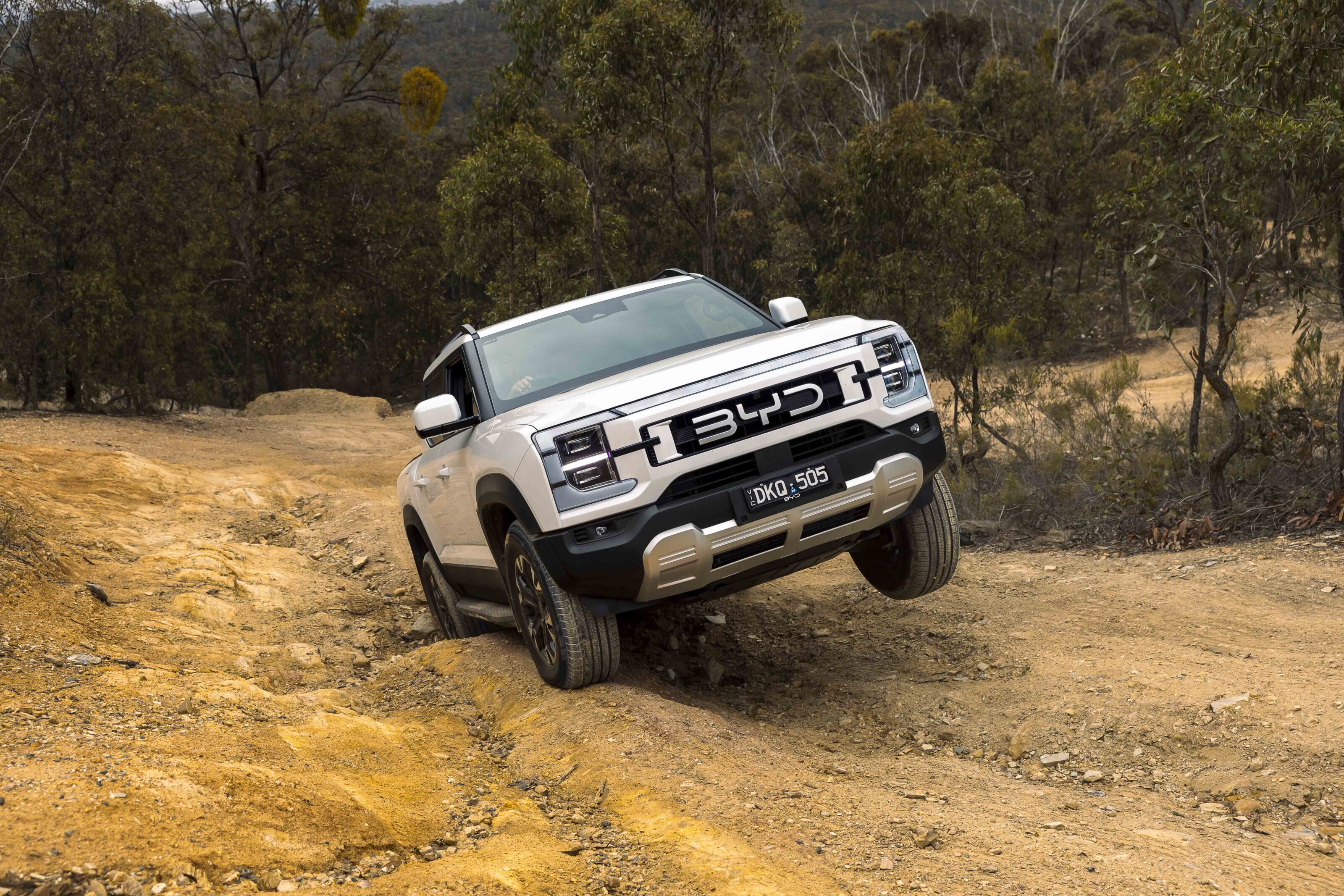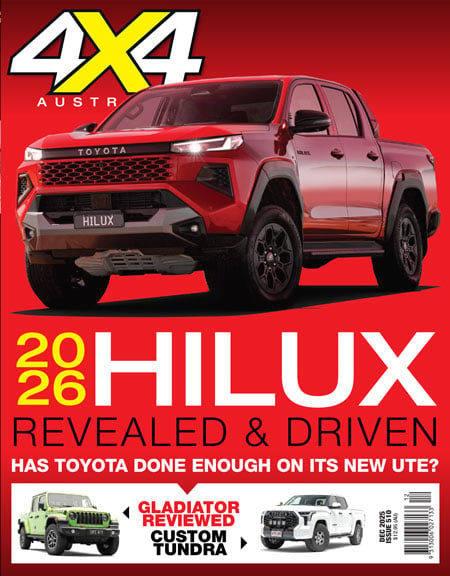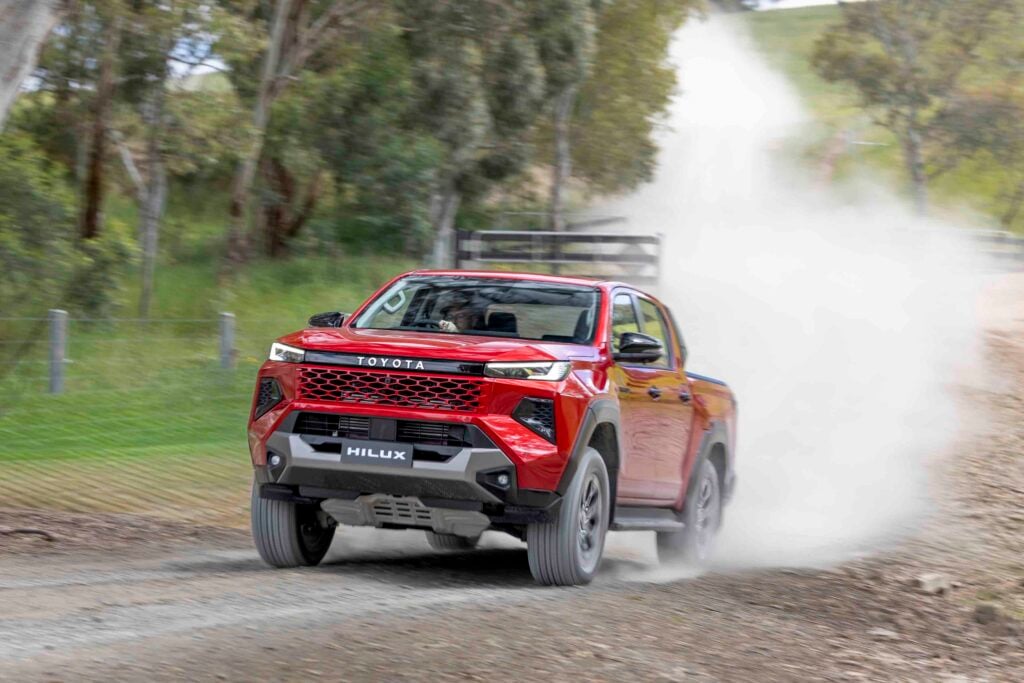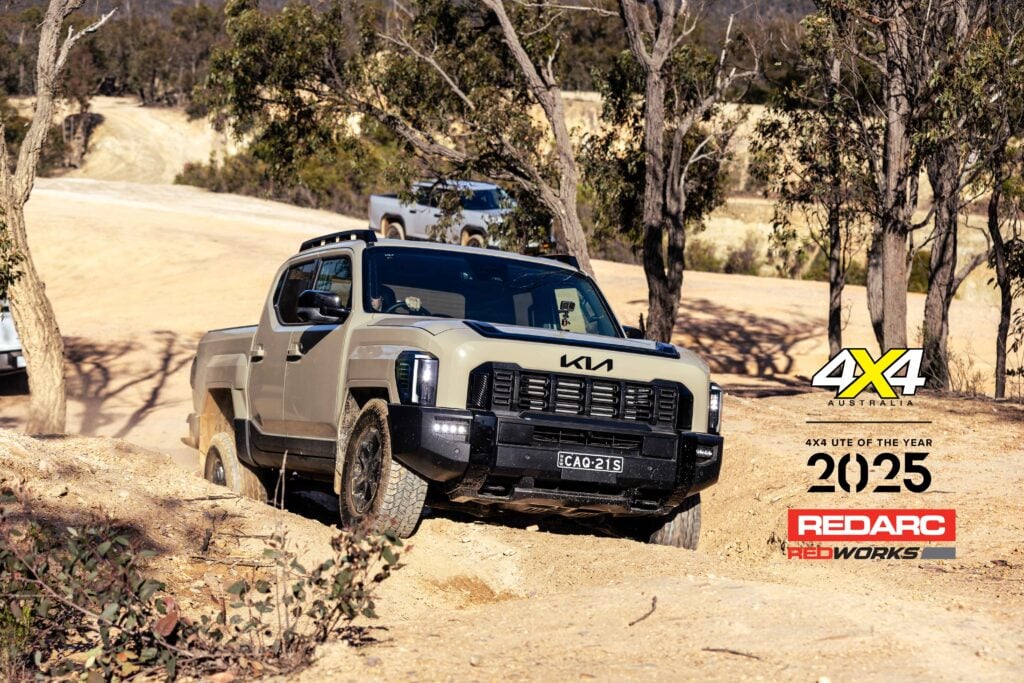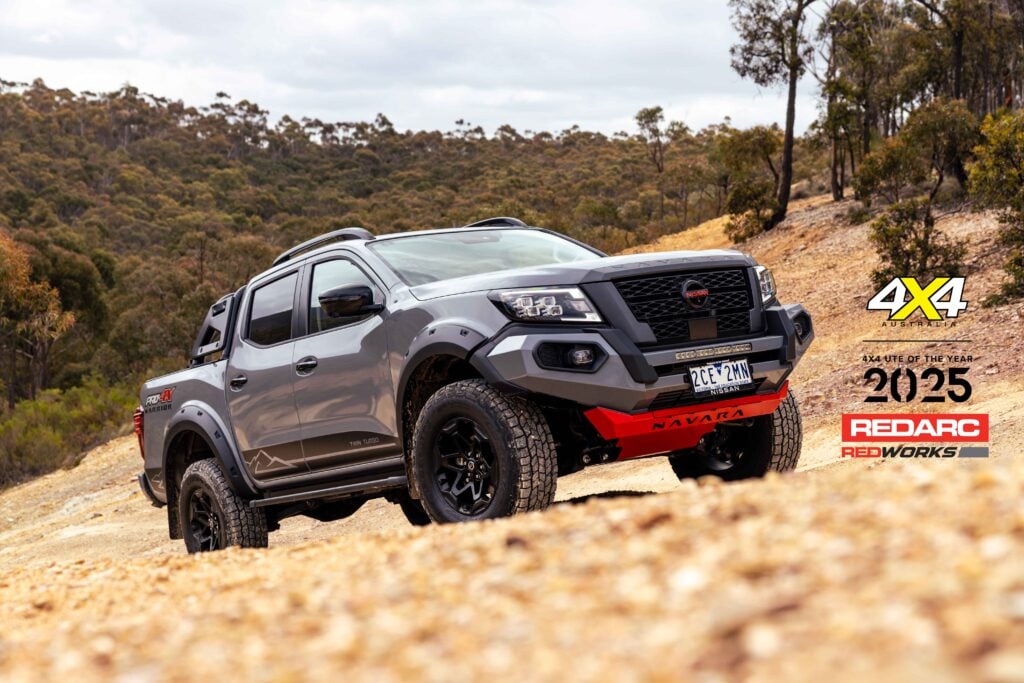Things we like
- Well-equipped
- Great on-road
- Low purchase price
Not so much
- Slow-reacting ETC
- Firm ride on rough roads
- Lack of wheel travel
Build Your Dreams (BYD) made big waves late last year when it announced and showed its Shark 6 midsize AWD ute. Not only was the Shark the first PHEV-powered vehicle in the ute segment but it promised stunning performance at a stunning launch price of $57,000.
Stunning because $57k barely gets you into a Ranger XLS or HiLux SR5, and the Shark comes with much more standard equipment than either of those two market leaders.
The company backed up the fanfare selling a tad more than 2000 Sharks in its first month on sale (February ’25), outselling ever-popular utes like the Isuzu D-Max, Mitsubishi Triton and Nissan Navara. It will be interesting to see if BYD can keep the momentum rolling on, and for how long it can maintain the current price point.
Early adopters that jumped in to get a Shark shouldn’t be disappointed in their purchase as they have a large, efficient, extremely well equipped ute that is going to tick all the boxes for many buyers. In its single specification, the Shark 6 includes features and interior finishes that are only available on top-spec 4×4 utes from other manufacturers… and at a considerably higher price than $57k.
JUMP AHEAD
What does it get?
BYD is a Chinese company that builds and sells more EVs in its homeland than almost all of its competitors put together. It’s well established in the EV market and is spreading globally quicker than the spicy cough, and it seeks that market domination wherever it sells cars.
The Shark 6 is BYD’s first ute and it’s targeted straight at the Australian market where such vehicles are so popular that they make up a large part of overall sales.
The Shark 6 is a familiar four-door cab on a separate ladder-frame chassis but that’s where the similarities to convention end. The suspension is independent at each corner using double wishbones and coil springs, and there is no low range in the drivetrain. In fact, there is no transfer case at all, nor any connection between the front and back wheels.
Size-wise, it’s at the bigger end of the midsize ute segment, closest to the Ford Ranger and VW Amarok in size, and the generous cabin space is well appreciated.
| BYD Shark | Ford Ranger (Sport V6) | |
|---|---|---|
| Length | 5457mm | 5370mm |
| Width | 1971mm | 2208mm |
| Height | 1925mm | 1886mm |
| Wheelbase | 3260mm | 3270mm |
| Wheel track | 1660mm | 1620mm |
Powertrain
Propulsion comes courtesy of a pair of electric motors – one at each the front and back axles, plus a petrol engine that can operate on the front axle when called for, but its primary use is charging the batteries that power the electric motors.
The ICE power unit is a 135kW/260Nm turbocharged 1.5-litre petrol engine and it is mounted longitudinally in the front of the vehicle along with a 130kW/330Nm electric motor. The motor powering the back wheels is totally isolated from the front. It makes 150kW and 340Nm and comes into effect when required either for traction or ultimate performance. That’s 321kW and 650Nm in total!
Most of the time it’s the electric motors driving the Shark 6 while the ICE maintains charge in the batteries, but the petrol engine cuts in at speeds above 70km/h and when full throttle is applied. Put your right foot down in the Shark and BYD claims it will dash from 0-100km/h in just 5.7 seconds, and we have no reason to question that – the Shark gets up and goes hard when you ask it to!
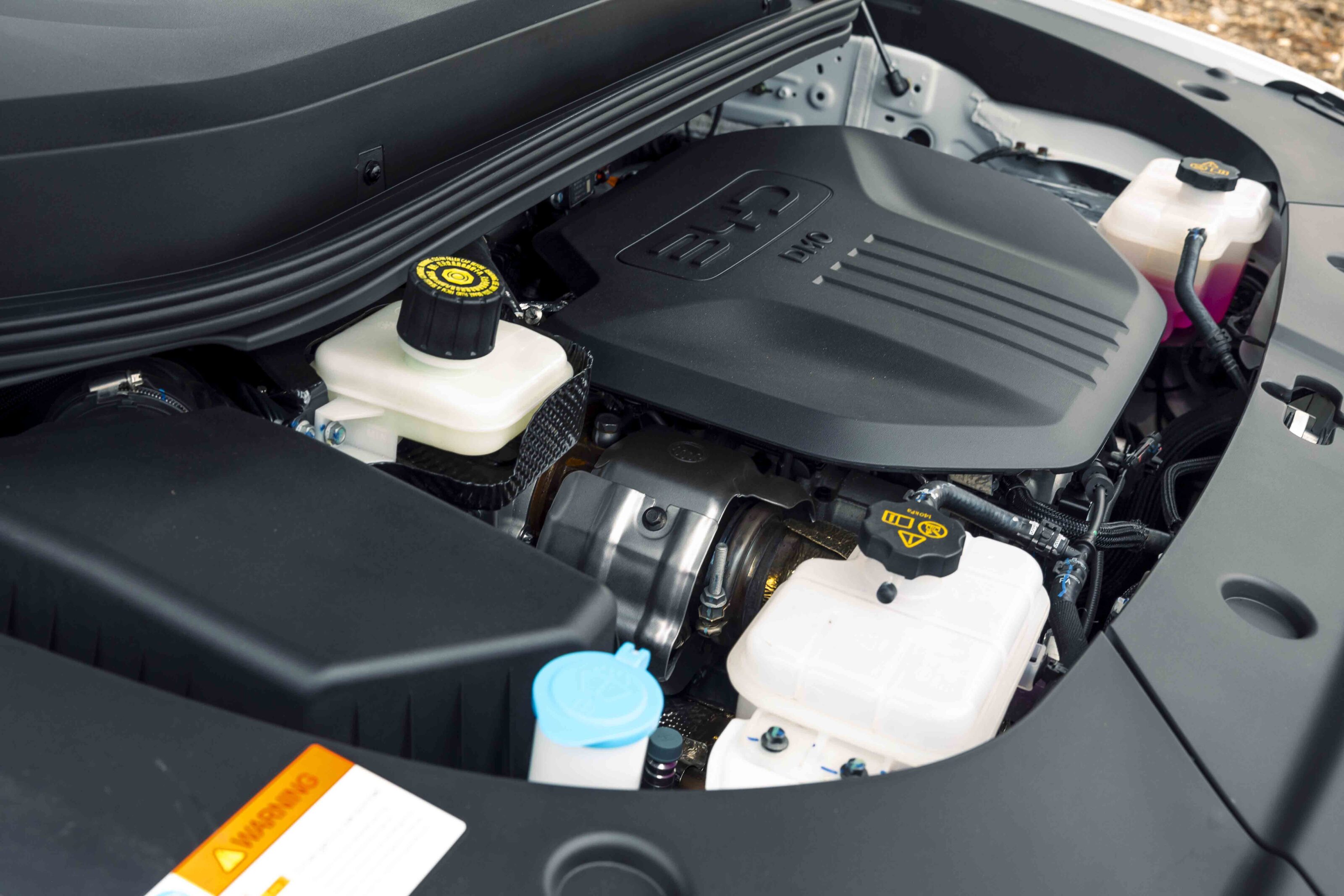
The battery is a 29.58kWh unit that sits low and flat in the chassis and BYD claims a range of up to 100km on a full charge using EV power only, depending on driving conditions.
The battery is charged by the ICE petrol engine, regenerative off-throttle charging or when plugged into a charger or home GPO. The petrol tank holds just 60 litres of fuel but with a 2.0L/100km official consumption rating, it gives close to 700km in touring range before you need to fill the tank or charge up from an external power source.
Driving the Shark around town it is mainly in full EV mode so it’s super quiet, and even when the petrol engine cuts in to charge the system you barely hear or notice it, resulting in very smooth and quiet propulsion. It’s only when you put your foot down that you notice the ICE powering the front wheels, but even then it is relatively quiet and smooth, particularly when compared to diesel-engine powered utes. These attributes, and the well-appointed interior, make the Shark 6 a very agreeable town ute.
Interior
The Shark 6’s cabin is spacious and reasonably well laid out. The finishes and touchpoints are soft, giving a feel of quality and luxury missing in most midsize utes which are more commercial-grade. The orange trim on the vents detracts from the quality appearance but that’s purely subjective; someone must like it.
The seats are covered in synthetic leather that has a genuine leather look and feel. The front seats are both heated and ventilated and have power adjustment. The rear seat has room for adult-size passengers with a reasonable recline on the backrest making it better for comfort than many other utes, especially on longer drives.
The centre infotainment screen is a huge 15.6-inch unit that sits in landscape mode in standard placement, but it can be rotated 90° to be viewed in portrait configuration if desired. However, if you wear polarised sunglasses the view of the screen might go dark for you in this upright mode. The landscape orientation is easier to view anyway.
The multimedia unit has DAB radio, Apple Carplay and Android Auto, and inbuilt satnav with free map updates for three years. The 12-speaker Dynaudio sound system adds to the premium feel of the cabin. Also included is dual-zone climate control and a wireless phone charging pad.
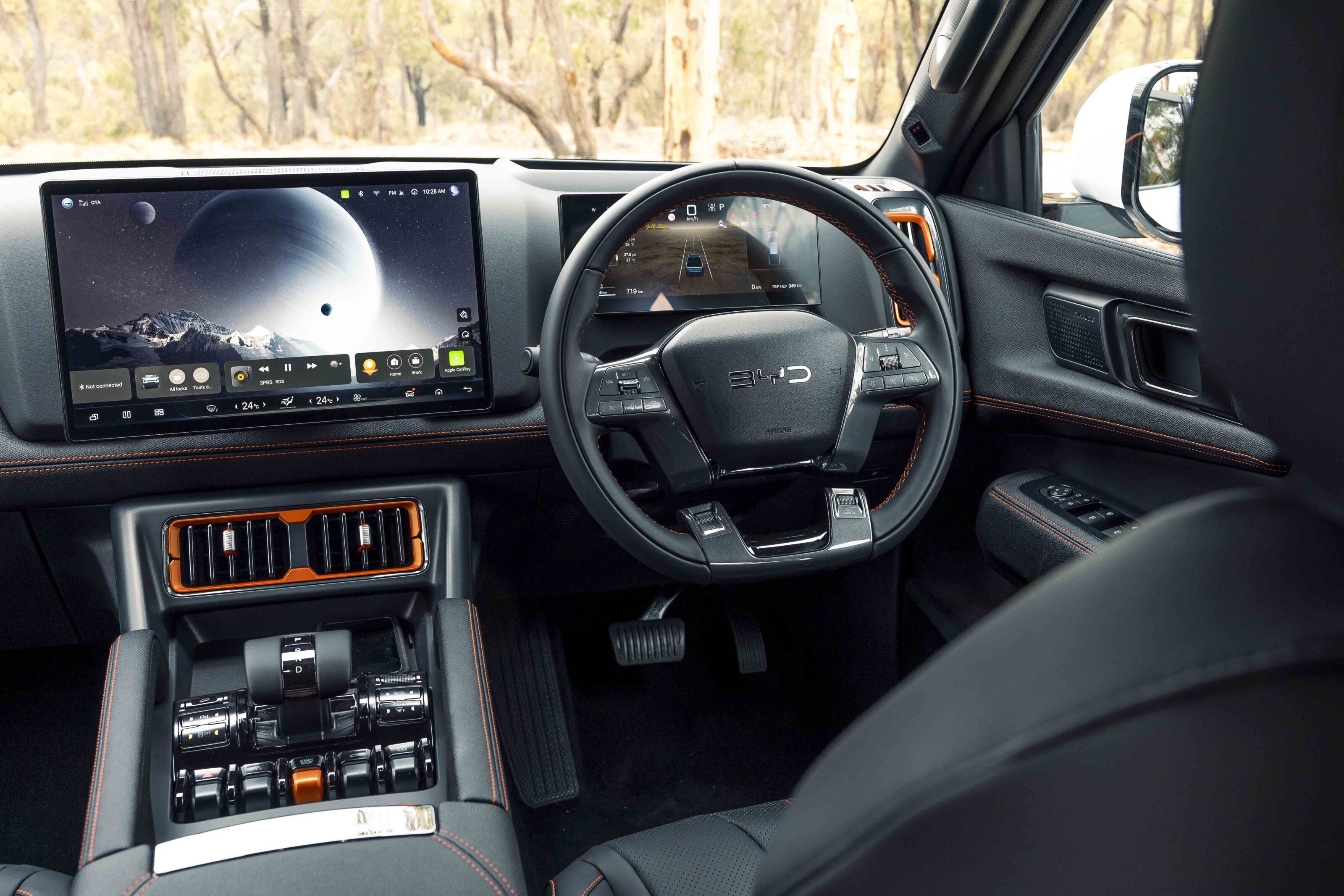
From a functionality point of view, it’s good to see that the temperature controls are always on the screen so you don’t need to go looking for them through menus, but with no physical dials or knobs, you can’t use them without taking your eyes off the road. There are physical rollers on the steering wheel and consoles for sound system volume control which is a plus for usability.
There are plenty of USB power outlets for both front and back seat passengers as well as a 230v/10A power outlet at the back of the console. There’s another three 230V/10A GPOs in the cargo tub for running tools and appliances off the battery pack.
The orange vents aside, the high levels of equipment and features gives the Shark’s cabin a premium feel that is lacking in the top models of the popular midsize utes, and is only found elsewhere in full-size American pickups costing twice as much as the BYD.
The quiet ride is aided by the use of Continental tyres but they are not well suited to off-road activity. Thankfully they are a common 265/65R18 size so you should be able to fit more durable alternatives. BYD offers the option of Toyo or BFG all-terrain tyres as well a choice of alloy wheel designs.
Safety
As you would expect of any all-new vehicle, the BYD Shark 6 features all the latest ADAS tech including a driver monitor with all the associated bells and whistles.
We were pleasantly surprised to find that the system was nowhere near as intrusive and annoying as similar systems in most other new vehicles. The warning chimes are subtle and not too offensive and the ADAS doesn’t constantly fight you at the steering wheel on freeways and backroads… but try and make a lane change without using an indicator (common practice in Melbourne) and the system lets you know it’s there and that it’s working.
On- and off-road performance
Not so smooth is the suspension which is very stiff and gives the Shark a firm ride on smooth roads and a rough ride on Melbourne’s woeful roads and highways.
One particular patch of potholes on exiting a roundabout rattled the Shark to such an extent that the whole cabin shook violently, leading me to wonder how it would feel once we got on a dirt road. I didn’t have to wait long as we soon hit the access road to our photography location; a well-groomed gravel road that has small corrugations in it. Again the Shark 6 shook violently with the scuttle shake you used to get in some convertible cars, but in this case it was felt through the whole passenger compartment.
I swapped into another 4×4 ute (standard suspension and tyres) and drove up the same road and while the corrugations could be felt it didn’t react and shake hard like the BYD did. With this in mind, I would have concerns about taking a BYD Shark 6 on standard suspension on any extended outback travel. A softer and more compliant suspension package would be warranted, and would improve the ride quality both on and off the road.
The shortcomings of the suspension also revealed themselves as the track deteriorated and the lack of suspension travel has it easily cocking wheels and losing traction. This in turn showed up the shortcomings of the drive system. After stopping on what could only be described as a gravel driveway with a slight incline, the Shark 6 wouldn’t advance off the mark, only spinning a single front tyre.
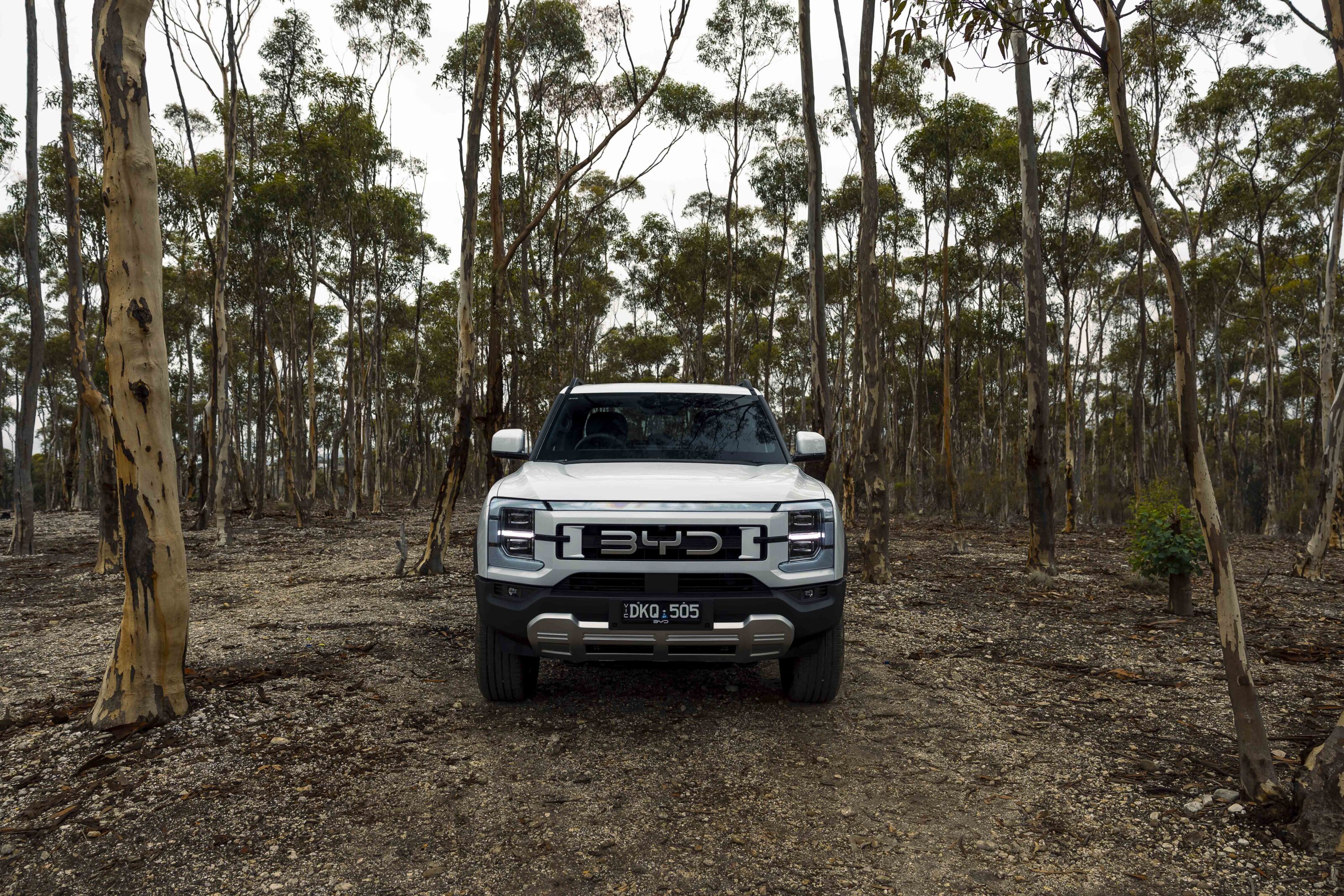
As described earlier, there is no mechanical connection between the front and rear wheels, only an electronic one. The Shark 6 does have multiple dive modes – Normal, Mud Land, Sand Land, Snow Land and Mountain Land. In the Normal mode, which you would expect to use on such a gravel track, the Shark 6 is essentially a front-wheel drive vehicle and it wasn’t until I selected one of the other modes that drive was applied to the rear wheels by its motor and the Shark 6 progressed.
It was no surprise that the Shark 6 failed to progress when pointed at a steeper rutted track when in Normal mode but playing with the modes did bring positive results. We found that Mountain Land mode worked the best and got the Shark 6 up the track… but it did so kicking and screaming. The electronics are slow to react and feel and sound a lot like the early ETC systems from Land Rover that came out in the Discovery Series 2 (update model without centre diff lock) and early Freelander models. It’s slow to react and noisy in doing so, resulting in excessive wheelspin and kicking up plenty of dust.
With its electric motor powering the rear wheels any sort of locker would probably come as a software update from BYD, but for owners looking to upfit their Shark 6 for specific usage, BYD has partnered with Ironman to develop a range of accessories. These must be purchased from BYD at the time of buying your Shark and they include a choice of front bumpers including a bull bar, roof racks, roller tonneau cover and a canopy.
With the exceptionally high sales of the Shark 6 in its first months on sale we expect other aftermarket equipment manufacturers to soon jump on board with gear for this ute.
Verdict
I expected better of the Shark 6 considering how ‘advanced’ it feels in many areas, and I was disappointed in its performance off sealed roads.
This is not an offroad 4×4 ute; I brought up these tractive deficiencies of the Shark 6 when we drove a pre-production prototype last year and BYD said it would be updated and addressed in the production model. The off-highway deficiencies aside, the BYD Shark 6 is an exceptional ute that brings new levels of efficiency, interior trim and design to the ute segment.
I said at the start that the Shark 6 represents a great first entry into the ute market, and that comment stands. Now we await to see how the brand seeks to address its deficiencies, or whether it prefers to leave the vehicle as simply a ripper town ute.
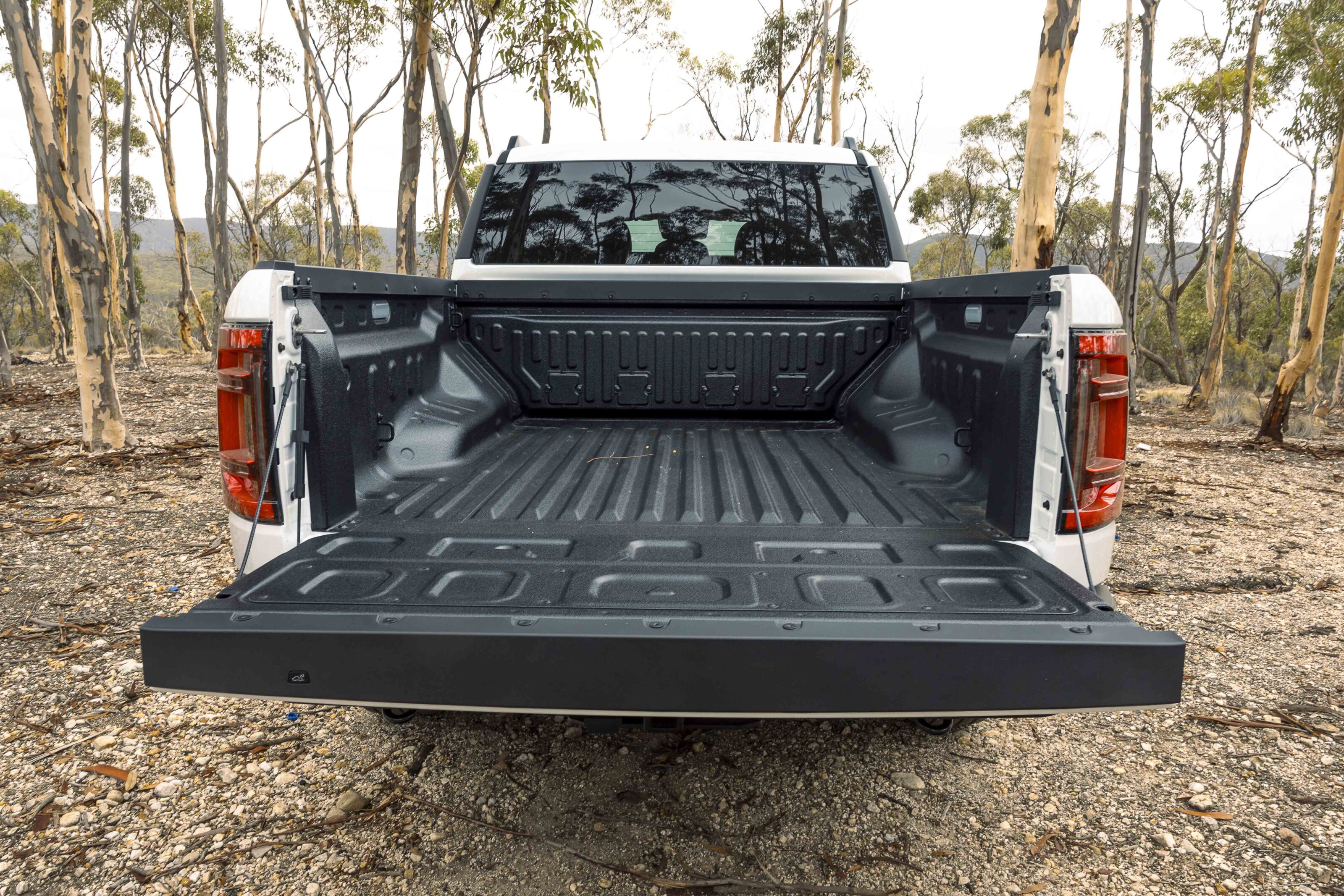
Specs
| Price | $57,000 |
|---|---|
| Engine | PHEV; turbocharged petrol engine with electric motors front and rear |
| Capacity | 1.5L |
| Max power | (ICE) 135kw, (EV) 130kw (front) 150kw rear |
| Max torque | (ICE) 260Nm, (EV) 310Nm front, 340Nm rear |
| 4×4 system | Individual between front and rear wheels |
| Construction | 4-door ute on ladder frame |
| Front suspension | Independent, double wishbones with coil springs |
| Rear suspension | Independent, double wishbones with coil springs |
| Tyres | 265/65R18 on alloy wheels |
| Kerb weight | 2710kg |
| GVM | 3500kg |
| GCM | 5750kg |
| Towing capacity | 2500kg |
| Payload | 790kg |
| Seats | 5 |
| Fuel tank | 60L |
| ADR fuel consumption | 2.0L/100km |
| Approach angle | 31 |
| Ramp-over angle | 17 |
| Departure angle | 19.3 |
| Ground clearance | 230mm |
| Wading depth | 700mm |
Things we like
- Well-equipped
- Great on-road
- Low purchase price
Not so much
- Slow-reacting ETC
- Firm ride on rough roads
- Lack of wheel travel
We recommend
-
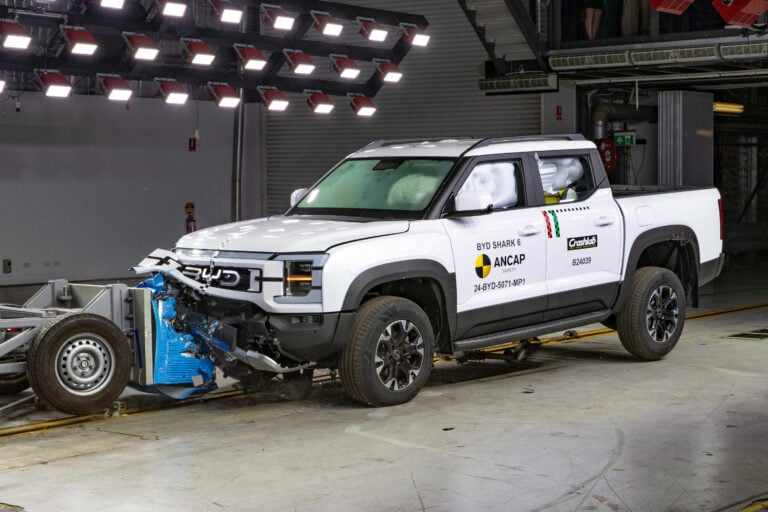 News
News2025 BYD Shark gets five-star ANCAP safety rating
Shark nets top ANCAP safety score
-
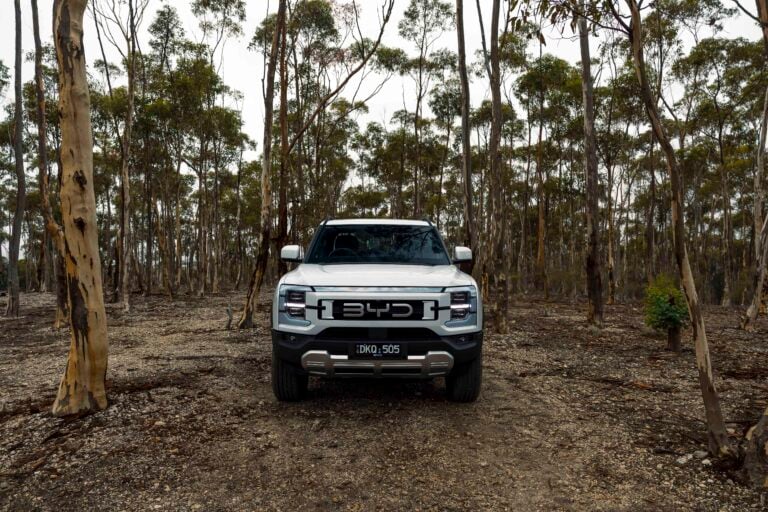 News
News2025 BYD Shark ute: Everything we know
Bite-sized coverage of everything we know about the all-new Shark!
-
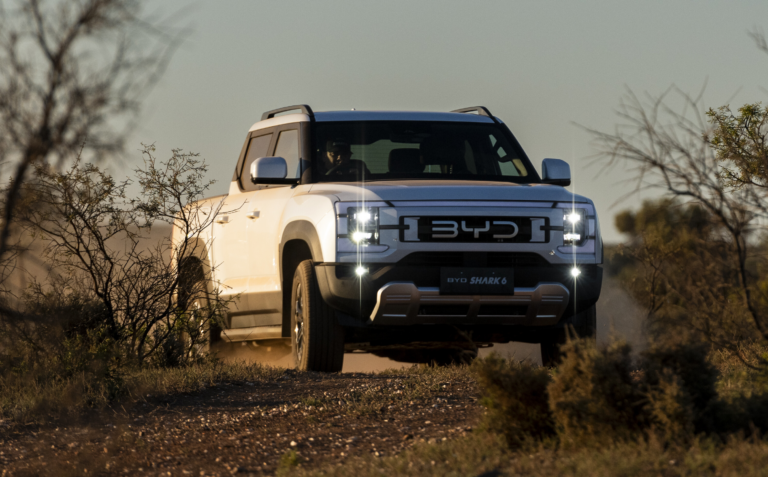 News
News2025 BYD Shark 6: More than 2000 orders taken in first 24 hours
Strong early sales show high demand for Shark PHEV ute


